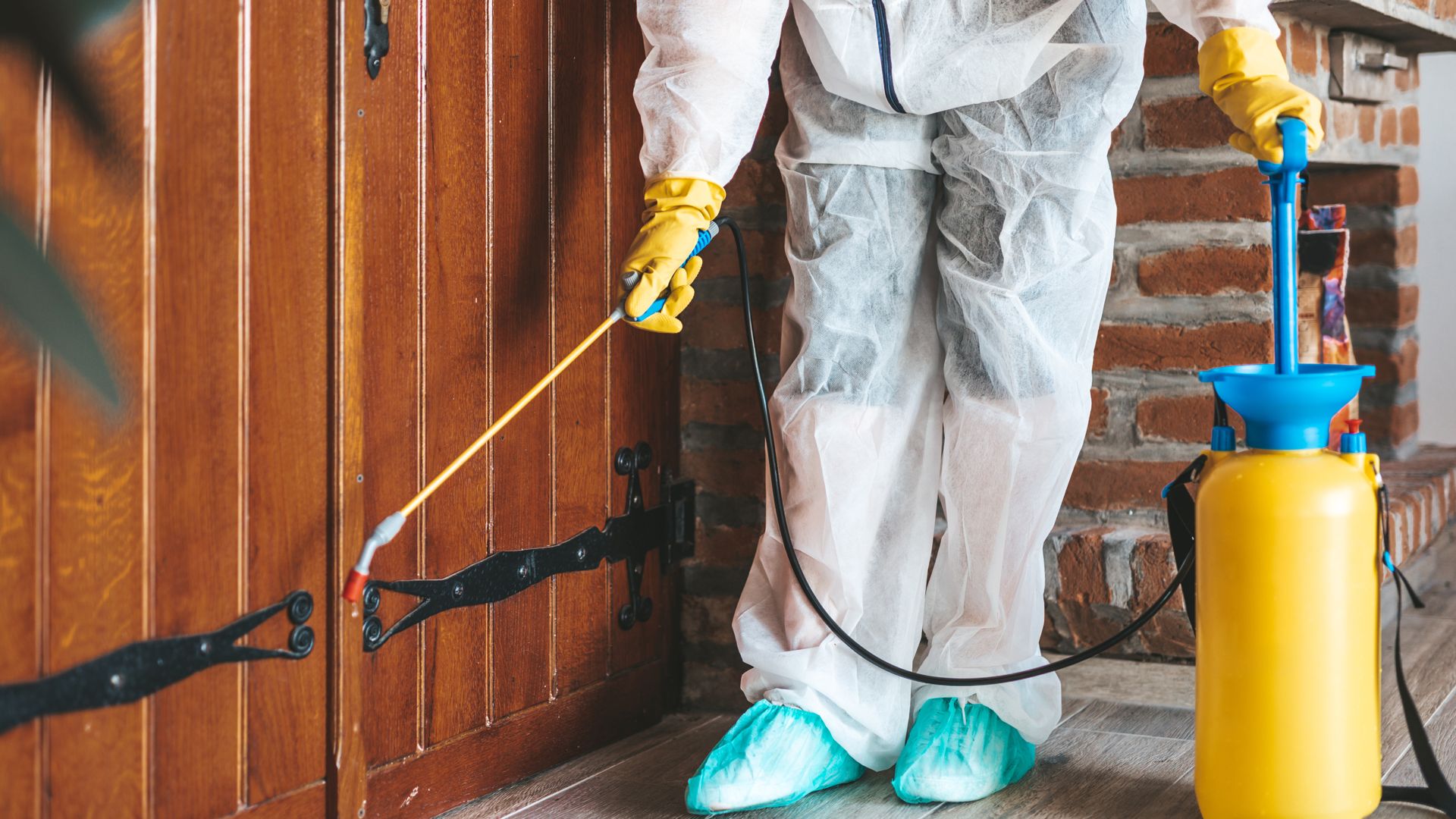
YELLOW JACKET IDENTIFICATION
(Vespula)
Yellow jackets are a species of stinging insect in South Carolina. They are social insects that live and work together in fairly large colonies; some having thousands of members in them. Their colonies tend to reach their highest numbers in the late summer and early fall. A sting from one of these pests can lead to serious health concerns for some people that may require immediate medical attention.

What do yellow jackets look like?
Yellow jacket adults have a distinctive segmented body with a thin waist; they are hairless and have elongated wings. When at rest yellow jackets fold their wings laterally against their body. They are also equipped with antennae and have six legs. Adults typically grow to between 3/8th and 5/8th of an inch in length. The yellow jacket's face and head is a combination of black and yellow colors, while their body has a well-defined yellow and black banded pattern on it.
Quick yellow jacket facts
- The male and worker yellow jackets die over the course of the winter. Only the Queen survives.
- A yellow jacket's stinger doesn't detach, meaning they can sting multiple times.
- If killed or attacked, yellow jackets release pheromones to alert other yellow jackets to come help.
- A queen yellow jacket can lay thousands of eggs.
Yellow jacket habits and behaviors
Each spring, fertilized queens emerge from their overwintering spots to create a new nest and lay her first batch of eggs; over the spring and summer months, both the size of the nest and size of the colony grow significantly. They build their paper nests out of a mixture of chewed up cellulose and saliva. Their nests are found in the ground, but, if given the opportunity, they may place their nest under a deck or porch, or inside of a building behind its walls or in attic spaces. In the late fall, when the weather cools off significantly, new fertilized queens will leave the colony to find a safe spot to overwinter in and the remaining workers and males will die off. Yellow jackets are a species of social wasp that are responsible for some pollination, but are mostly known for being predators. They prey upon other insects, including caterpillars, grubs, and flies; they will also eat other types of sweets and proteins that they come across. Yellow jackets are common problems at large outdoor events where there is a lot of food and open drink containers.
Are yellow jackets dangerous?
Yes, yellow jackets are dangerous to have nesting on, under, or near your home. Yellow jackets have a smooth stinger which allows them to sting their victim repeatedly. A yellow jacket sting is very painful and causes a large red welt to form where the sting occurred; also, their venom has the ability to trigger very serious allergic reactions in some people that can cause very serious health complications.
Does Aiken treat yellow jackets?
Yes, Aiken treats for stinging insects including yellow jackets. These pests are dangerous and should not be handled without the expertise of a professional. Don’t risk being stung; call us today for more information about yellow jacket removal or any additional home pest control programs we offer!
Additional Yellow Jacket Articles

Hear from our happy customers
-
“They are always very helpful and pleasant from the field technicians to the people answering the phone.”- Audrey A.
-
“Mr. Cecil was very thorough in his inspection of my home, and even identified a couple of potential problems that I would never have known about.”- Stephanie F.
-
“He is a very kind young man. And always continue to deliver your great service to us.”- Ruby S.
-
“This was the first time I met him as we have been a long time customer of Aiken Pest Control. I hope he will be our normal scheduled tech that comes out!”- Samantha G.
-
“He was extremely knowledgeable and took care with the safety of my dog and my horses pony. He was polite and definitely went the extra mile for my family!!”- Christina W.


Latest Blogs
Stay informed about pests and pest related issues in your area!


